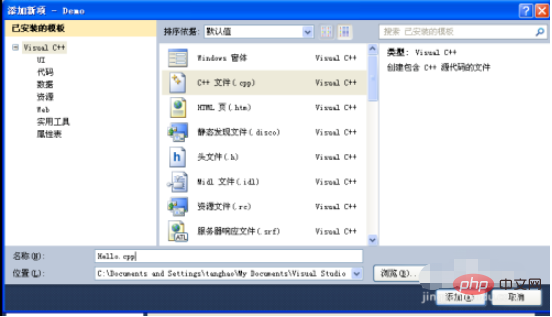Home >Backend Development >C#.Net Tutorial >How to write and run C++ programs in Visual C++2010
How to write and run C++ programs in Visual C++2010
- coldplay.xixiOriginal
- 2021-01-07 14:13:3655405browse
How to write and run a C program in Visual C 2010: First open the editor, create a new project and enter the name and save location; then select "Source File", right-click, and select [Add - New Item]; then Enter the code; finally click Debug.

The operating environment of this article: Windows 7 system, Visual C 2010 version, Dell G3 computer.
[Related learning recommendations: C language tutorial video]
How to write and run C programs in Visual C 2010:
1. Open vs2010, select "visual c development settings", and then click "Start Visual Studio".

#2. Click New Project, then select the empty project under the Visual C label in the pop-up window, enter the name and save location.

3. In the "Solution Explorer" on the left, select "Source File", right-click, and then select "Add"->"New Item" .

#4. In the pop-up window, select "C file (.cpp)", enter the file name, and click "Add".

#5. Now enter the specific code, for example, enter a simple Hello World program.

6. Click "Debug"->"Start execution (without debugging)" or press Ctrl F5 to start running, as shown in the figure.

The above is the detailed content of How to write and run C++ programs in Visual C++2010. For more information, please follow other related articles on the PHP Chinese website!

